Dieffenbachia, commonly known as Dumb Cane, is one of the most popular houseplants for both homes and offices. Known for its stunning variegated foliage in shades of green, cream, and yellow, it’s easy to see why plant lovers gravitate toward this tropical beauty. Native to the rainforests of Central and South America, Dieffenbachia is valued for being low-maintenance, hardy, and highly decorative.
One of the most crucial aspects of keeping a Dieffenbachia healthy is proper watering. Both underwatering and overwatering can cause significant stress to the plant, affecting its appearance and growth. So, the pressing question for many indoor gardeners is:
How often should you water a Dieffenbachia?
In this comprehensive guide, we’ll explore the ideal watering schedule for Dieffenbachia, the factors influencing its water needs, clear signs of underwatering and overwatering, proper watering techniques, and essential care tips to help your plant thrive indoors.
Introduction to Dieffenbachia
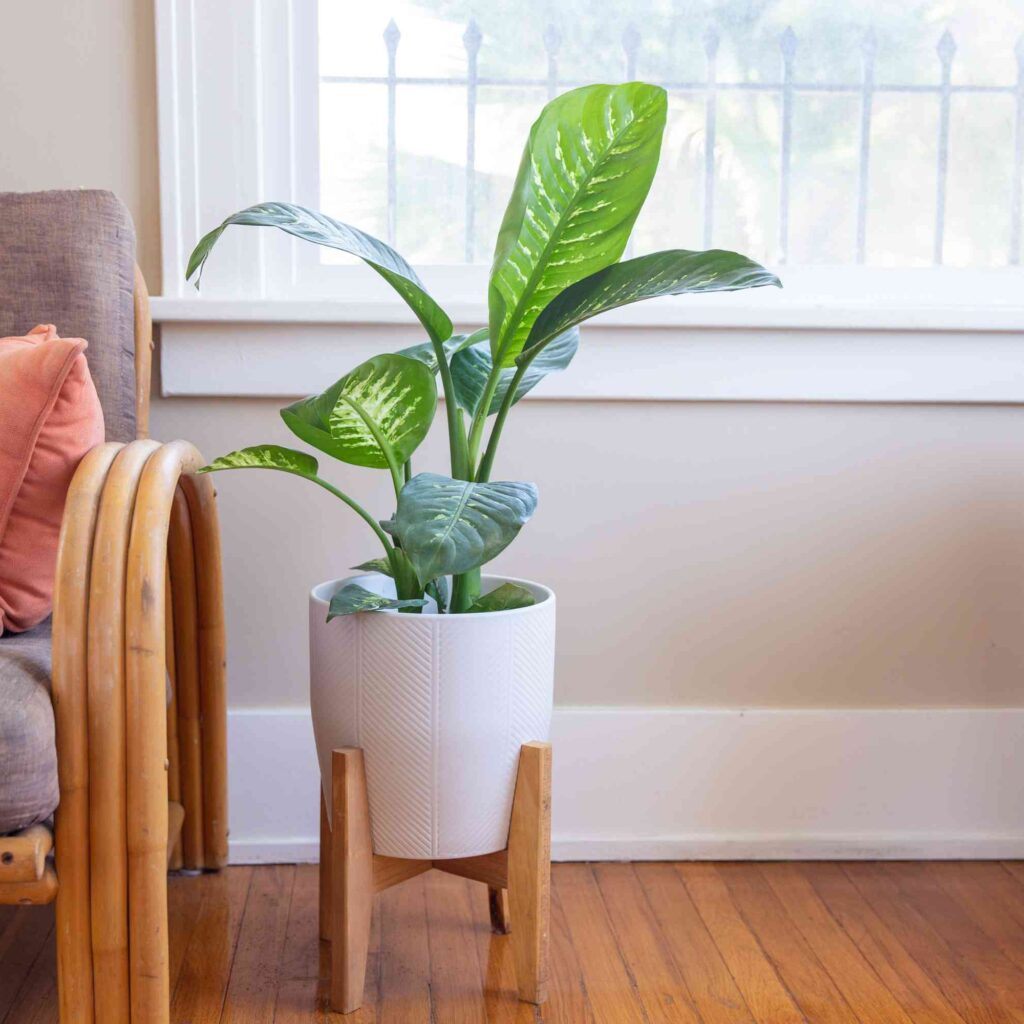
Dieffenbachia is a tropical perennial plant recognized for its broad, glossy, oval leaves featuring eye-catching patterns. It belongs to the Araceae family, which also includes popular plants like Peace Lilies and Philodendrons.
The plant earned the nickname “Dumb Cane” because its sap contains calcium oxalate crystals, which can cause temporary speechlessness or irritation if ingested — hence, it should be kept out of reach of pets and children.
While Dieffenbachia is known for being forgiving and adaptable, mastering its watering requirements is key to maintaining lush, healthy foliage.
How Often Should You Water a Dieffenbachia?
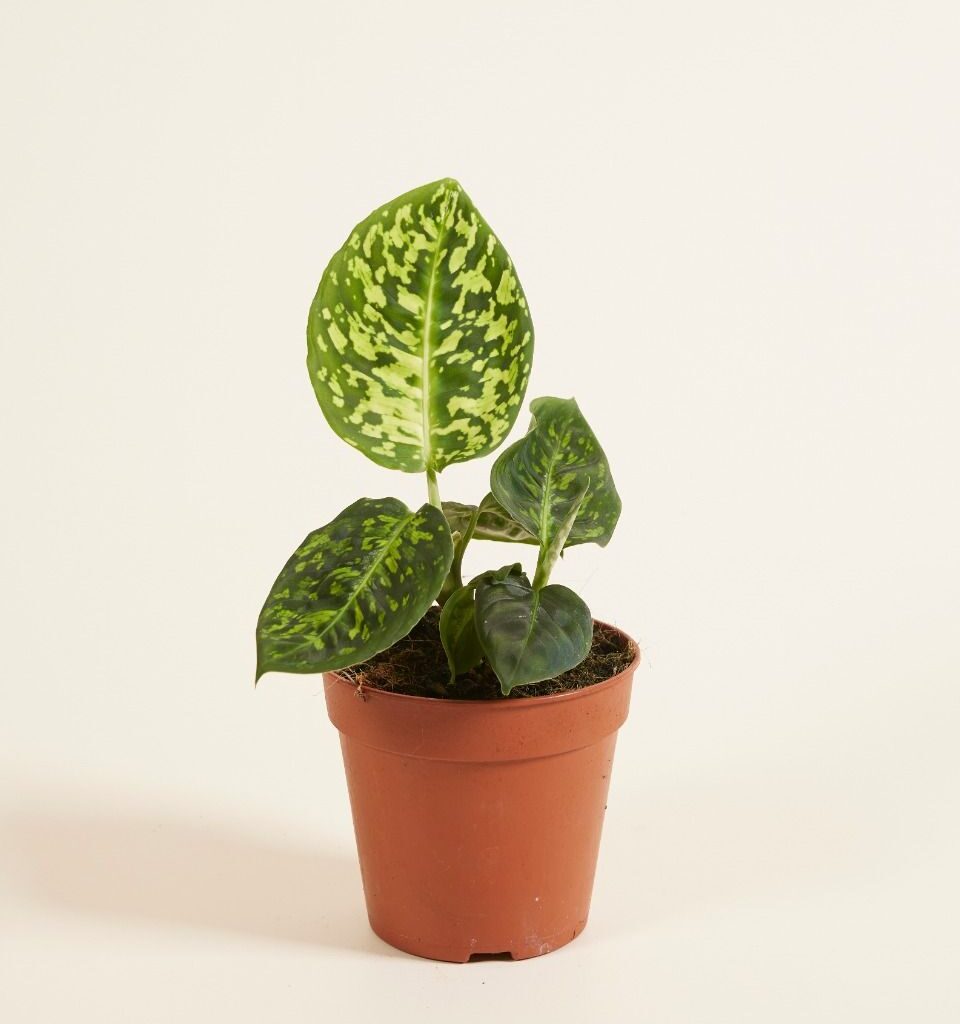
On average, you should water a Dieffenbachia once every 5–7 days during its active growing season (spring and summer) and every 10–14 days during its dormant season (fall and winter).
However, watering frequency can vary based on factors such as light exposure, indoor temperature, humidity, pot size, and soil type. The best approach is to check the top 1–2 inches of soil and water when it feels dry to the touch.
General Watering Rule:
- Spring & Summer (active growth): Every 5–7 days
- Fall & Winter (dormancy): Every 10–14 days
Important: Don’t rely strictly on a calendar. Always test the soil’s moisture level before watering.
Factors That Affect Dieffenbachia Watering Frequency
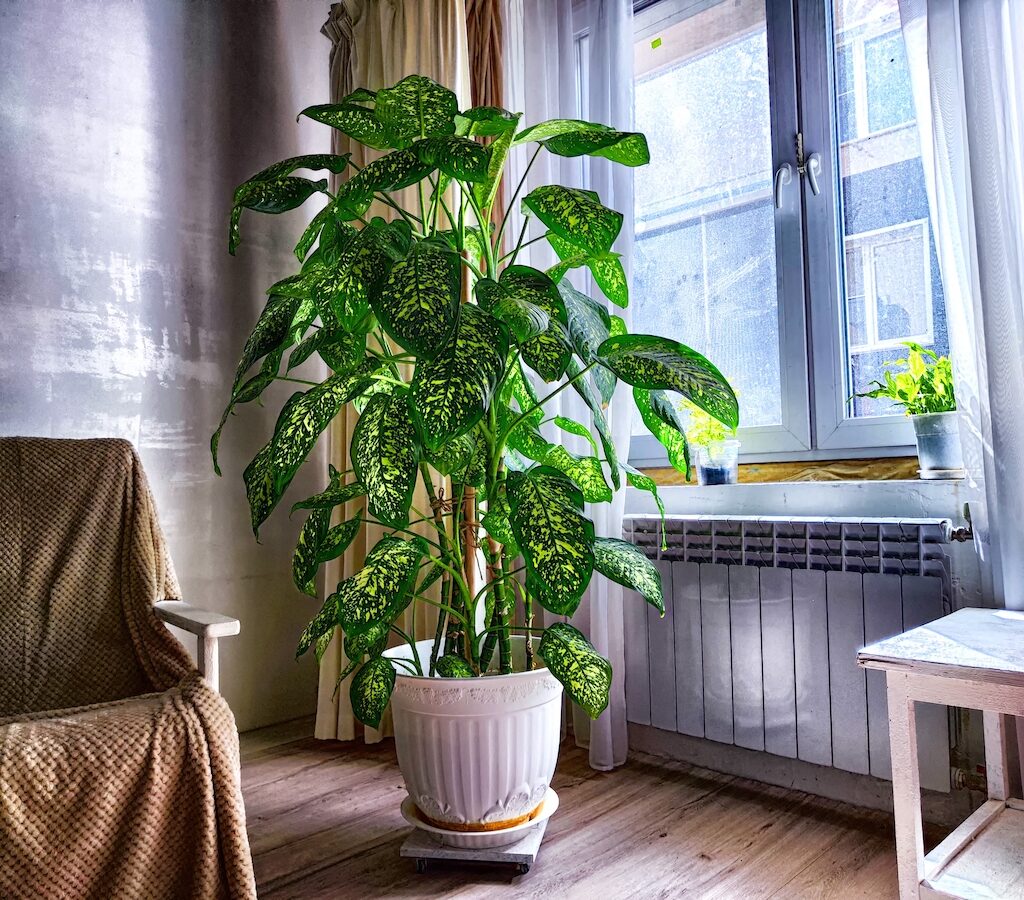
Understanding the variables that influence Dieffenbachia’s water needs will help you tailor a more effective watering schedule:
Season and Temperature
- Warm months (spring and summer): Higher temperatures and rapid growth mean the plant consumes more water.
- Cooler months (fall and winter): Lower temperatures and reduced growth slow down water uptake.
Indoor Humidity
As a tropical plant, Dieffenbachia prefers moderate to high humidity (50–70%). In dry air, especially when heating systems are running, water evaporates faster, and you’ll need to water more frequently.
Pot Size and Material
- Smaller pots dry out more quickly than larger containers.
- Terracotta pots are porous and absorb water, causing soil to dry faster than plastic or glazed pots.
Light Exposure
Dieffenbachia thrives in bright, indirect light but can tolerate low light. More light increases evaporation rates and the plant’s water consumption.
Soil Type
Well-draining soil is crucial. Dense, compacted soil retains water longer and can cause root rot if overwatered, while light, airy soil dries more quickly.
Signs Your Dieffenbachia Needs Watering
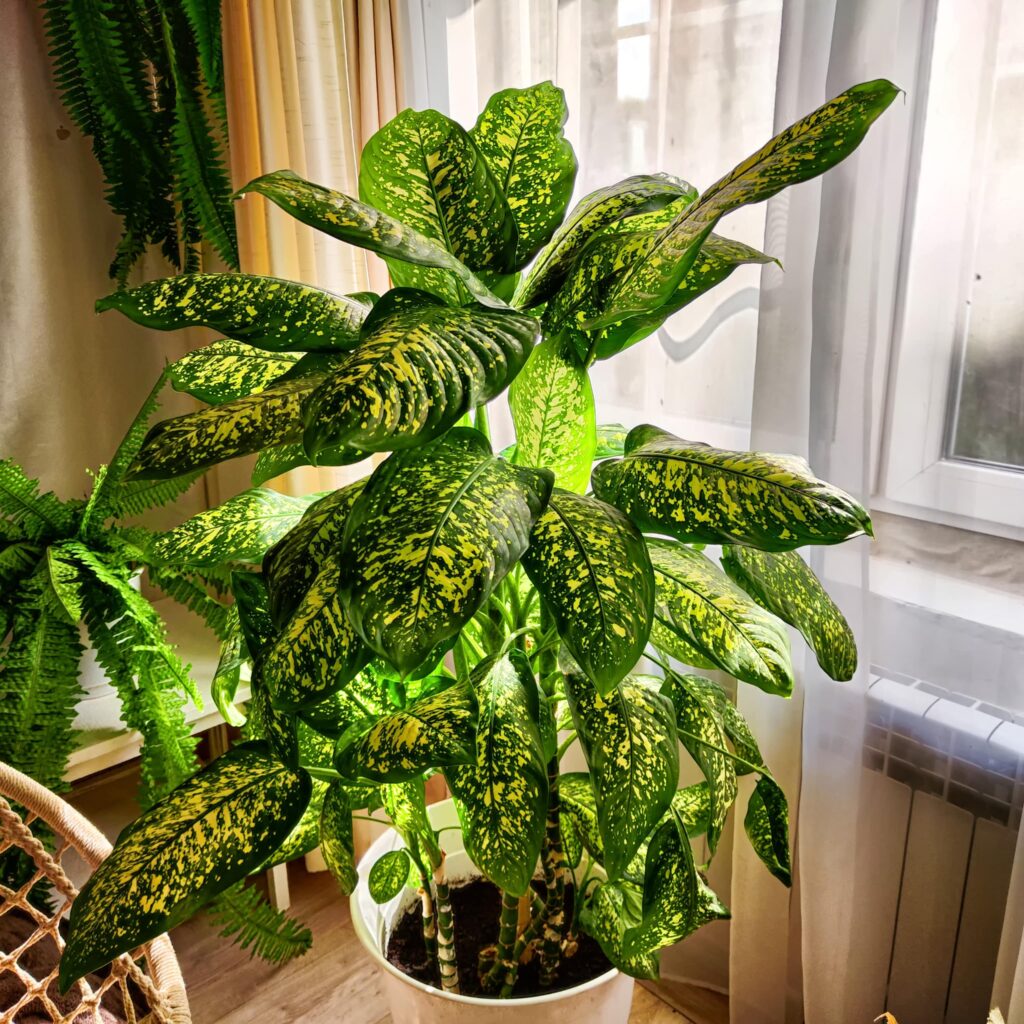
Dieffenbachia communicates its thirst through several clear signs. Recognizing them early can help prevent stress and damage:
Dry Topsoil
If the top 1–2 inches of soil feels dry, it’s time to water.
Wilting or Drooping Leaves
The leaves will droop or appear limp when the plant is dehydrated.
Crispy or Brown Leaf Edges
Prolonged dryness or low humidity causes the leaf tips and edges to turn brown and dry.
Slow Growth
If your plant’s new leaves emerge slowly or look stunted during the growing season, it may be lacking water.
Signs of Overwatering a Dieffenbachia
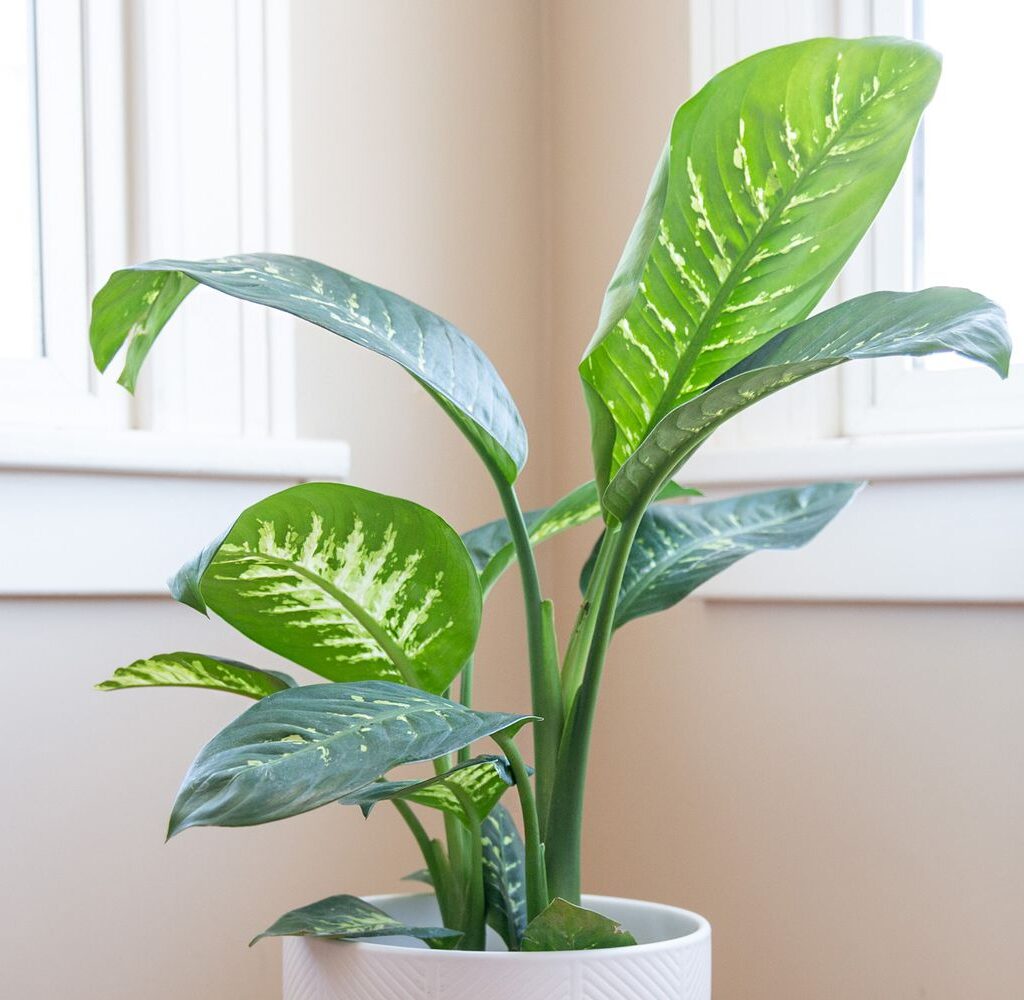
While Dieffenbachia enjoys consistent moisture, it’s highly susceptible to overwatering, which can lead to serious problems like root rot. Be vigilant for these warning signs:
Yellowing Leaves
Lower leaves turning yellow, especially when the soil remains wet, is a classic symptom of overwatering.
Wilting Despite Wet Soil
If the leaves droop while the soil feels moist, root rot or waterlogged soil may be suffocating the roots.
Soft or Mushy Stems
At the soil line, stems may turn soft or mushy when exposed to excess water.
Fungal Growth on Soil Surface
A moldy or sour-smelling topsoil indicates poor drainage and excessive moisture.
How to Properly Water a Dieffenbachia
Mastering the right watering technique is just as important as watering frequency. Here’s how to do it:
Use the Soak and Drain Method
- Water the plant slowly and evenly until water drains freely from the bottom of the pot.
- Empty the saucer after 10–15 minutes to prevent standing water.
- Allow the top 1–2 inches of soil to dry before watering again.
Tip: Always use a pot with drainage holes.
Use Lukewarm or Room-Temperature Water
Avoid cold water, as it can shock the plant’s roots. Use water at room temperature for best results.
Check Soil Moisture Regularly
Use your finger, a wooden stick, or a moisture meter to test soil dryness before watering.
Seasonal Watering Adjustments for Dieffenbachia
Here’s a practical seasonal watering guide to fine-tune your care routine:
| Season | Watering Frequency | Notes |
|---|---|---|
| Spring/Summer | Every 5–7 days | Active growth and warmer weather increase moisture needs. |
| Fall/Winter | Every 10–14 days | Reduced growth and cooler temperatures slow water usage. |
Always check the soil’s top layer before watering — never rely solely on a fixed schedule.
Best Type of Water for Dieffenbachia
Dieffenbachia can be sensitive to chemicals like chlorine and fluoride in tap water, which can cause leaf browning and tip burn.
Ideal Water Choices:
- Filtered water
- Rainwater
- Distilled water
- Tap water left to sit for 24 hours
Using these options helps maintain the plant’s vibrant foliage and overall health.
Additional Dieffenbachia Care Tips
Besides proper watering, other care practices will enhance your Dieffenbachia’s growth and beauty:
- Light: Prefers bright, indirect light but tolerates medium light conditions.
- Humidity: Maintain 50–70% humidity; mist regularly or use a humidifier.
- Soil: Use a light, well-draining, peat-based potting mix.
- Temperature: Keep between 65–80°F (18–27°C) and avoid cold drafts.
- Fertilizing: Feed with a balanced liquid fertilizer every 4–6 weeks during the growing season.
- Pruning: Trim yellowing or dead leaves regularly to encourage new growth.
- Repotting: Repot every 1–2 years or when the plant becomes root-bound.
Why It’s Better to Underwater Than Overwater
Dieffenbachia recovers more easily from temporary dryness than from overwatering, which can rapidly lead to fatal root rot. If unsure, allow the soil to dry slightly more rather than risk soggy conditions.
When in doubt, check the soil moisture and only water when the top layer feels dry.
Conclusion
How often should you water a Dieffenbachia?
Typically, every 5–7 days in spring and summer and every 10–14 days in fall and winter. The most reliable method, however, is to monitor the top 1–2 inches of soil and water when it feels dry.
By combining regular soil checks, using proper watering techniques, choosing the right water type, and maintaining ideal environmental conditions, you can enjoy a healthy, beautiful Dieffenbachia that brings lush, tropical charm to your indoor spaces.
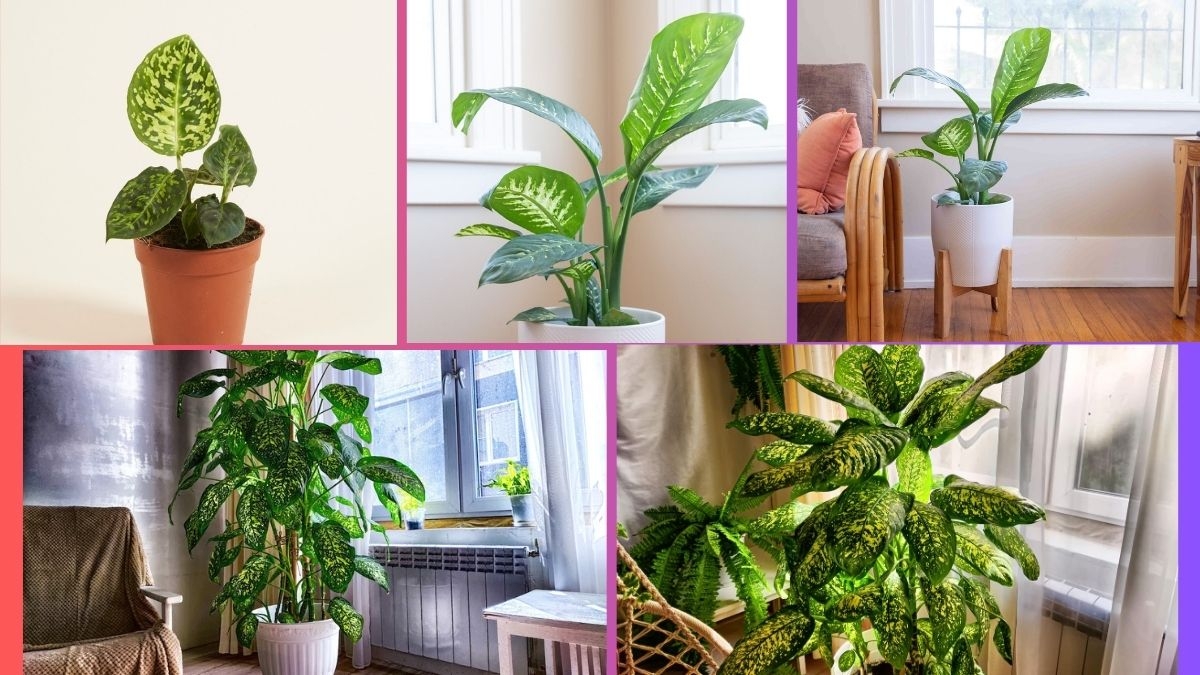



Leave A Comment